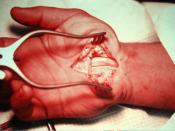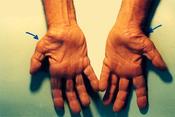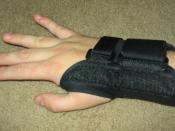CARPAL TUNNEL SYNDROMEWithin the past two years, substantial media attention has been directed at potential adverse health effects of long-term computer use. Renewed concerns about radiation, combined with reports of newly-recognized "repetitive stress injuries" such as carpal tunnel syndrome, have led some to call for regulation in the workplace and others to rearrange their offices and computer labs. There is little evidence that computer use is on the decline, however. On the contrary, more people are spending more time doing more tasks with computers -- and faculty, students and staff at colleges and universities have some of the most computer-intensive work styles in the world.
If, as is widely suspected, health effects are cumulative, then many of us are at risk in our offices, labs, dormitories, and homes. Unfortunately, many years will be required before epidemiological studies can provide definitive guidelines for computer users, managers, furniture suppliers, and office designers.
In the interim, individuals and institutions must educate themselves about these issues and protective measures.
One set of issues concerns workstation design, setup, and illumination, together with users' work habits. The City of San Francisco, which recently enacted worker safety legislation, cited research by the National Institute of Occupational Safety and Health (NIOSH) into VDT operator complaints of eyestrain, headaches, general malaise, and other visual and musculoskeletal problems as the rationale for imposing workplace standards, to be phased in over the next four years.
A second set of issues relates to suspected radiation hazards, including miscarriage and cancer. A special concern with radiation is that nearby colleagues could be affected as well, since radiation is emitted from the backs and sides of some terminals. The most recent NIOSH study is reassuring, but some caution still seems prudent.
Ergonomics and work habitsMost people can ride any bicycle on flat ground for...


